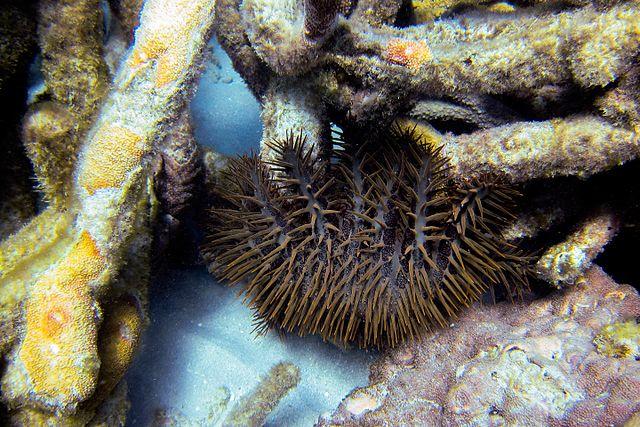It is understood that many thousands of crown-of-thorns starfish are devouring coral in the southern end of the Great Barrier Reef. Authorities are still struggling on how best to combat the problem and preserve one of Australia’s natural wonders.
The crown-of-thorns outbreak was initially discovered last year but because the area was so hostile and remote efforts to control the spread were hampered.
The GBRMPA (Great Barrier Reef Marine Park Authority) revealed that they had been working hard to find a solution to containing the outbreak since its discovery last year.
The GBRMPA director of education, partnerships and stewardship, Fred Nucifora, said that crews were sent to the area to monitor and assess the outbreak last month.
Mr Nucifora said that the teams had carried out some “pre-emptive culling” on the affected reefs but that there was another mission scheduled later in January.
Videos and images from the GBRMPA show the frightening sight of dozens of crown-of-thorns starfish taking over large areas of the reef and eating away at the coral.
The Australian Institute of Marine Science’s Hugh Sweatman said that the numbers of starfish present on the reef were very high. He went on to say the levels of starfish were “as high as we’ve seen” and that “a lot of coral” would be lost from the outbreak.
Sweatman pointed out that the starfish have poisonous barbs that can harm humans as well as the fact they can devour large areas of coral. He said that as the starfish have “an extrudable stomach” it can lie on the top of coral and wrap its stomach around it.
The crown-of-thorns starfish is native to the Great Barrier Reef but can be particularly devastating when their population increases as rapidly as it has. While each starfish only eats a small amount each when their numbers are high enough the damage can be extensive.
Dr Sweatman revealed that the reef could be saved but only after a major culling job was done. The Federal Government and Marine Park Tourism Operators run culling operations but are seeking applications for a third boat to be dedicated to culling starfish on the reef.
Mr Nucifora pointed out that the culling efforts have been focused around areas of high tourism and ecological significance in the northern parts of the reef. Because some affected areas are so far off-shore it is unknown what size culling program would be needed to combat starfish mounting in those areas.
Scientists at the Marine Park Authority have said they are struggling to answer why the outbreak was occurring in areas so far off-shore as it did not match starfish behaviour in previous outbreaks.

